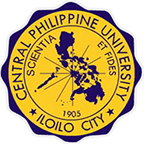VCO physicochemical properties of various coconut ages: Basis for optimization of raw material input of VCO production

Page views
726Petsa
2017May-akda
Tagapayo ng Tesis
Tagapangulo ng Panel ng Depensa
Magbahagi
Metadata
Ipakita ang buong tala ng item
Abstract
This experimental study aimed to produce, measure and analyze the physicochemical properties of Ariana VCO using the Fresh Wet Method (Cold Process) in relation to coconut maturity using Association of Analytical Communities (AOAC) official methods done in triplicate. The optimum age of coconut was determined by analyzing the moisture content, moisture and volatile matter (MVM), peroxide value and fatty acid composition of coconut samples selected according to maturity. It was observed that moisture content, MVM and fatty acid composition exhibited Eta values of 0.450, 0.198 and 0.076, respectively. These values are positive; however, these are small effect sizes as stated by Cohen (1988). Therefore, there was no relationship between maturity of coconuts and moisture content, MVM and fatty acid composition. There was also no relationship between maturity of coconuts and its peroxide value because the peroxide value is zero in all trials for different coconut ages. ANOVA analyses at p<= 0.05 revealed that no statistically significant difference was found among the three ages of coconuts on moisture content F (2, 6) = .761, p=.507, MVM F (2, 6) = .122, p=.887, and fatty acid composition, F (2, 6) =.017, p=.983. Consequently, the physicochemical properties of Ariana VCO do not vary for different coconut maturities. Therefore, there is no optimum age requirement for coconut to produce optimal values of physicochemical properties. From 9 months to 14 months, the physicochemical properties of VCO produced are the same.
Paglalarawan
Abstract only
Mungkahing Sipi
Valera, S. S. (2017). VCO physicochemical properties of various coconut ages: Basis for optimization of raw material input of VCO production (Unpublished Master's special paper). Central Philippine University, Jaro, Iloilo City.
Uri
Special paperMga Paksa
Mga keyword
Kagawaran
School of Graduate StudiesDegree
Master of Engineering major in Chemical EngineeringLokasyon ng Istante
GSL Theses 660.72 V236
Pisikal na paglalarawan
viii, 181 leaves
Collections
Mga parehong item
Ipinapakita ang mga item na nauugnay sa pamagat, may-akda, tagalikha at paksa.
-
The cushioning properties of woven and non-woven pads made of coconut coir of Capiz small coconut farmers marketing association, Ivisan, Capiz
Alocilja, Micah Geneca Y.; Mirasol, Charm V.; Olivar, Cherrie Lynn E.; Sumagaysay, Jerine G. (Central Philippine University, 2016-04)The packaging research measured the cushioning properties of coconut coir produced by CASCOFAMCO located at Ondoy, Ivisan, Capiz by constructing woven and non-woven cushioning coir pads of thickness 1", 1.5” and 2”. It was ... -
Efficacy of hagonoy (Chromolaena odorata L.) leaf powder extract against coconut leaf beetle (Brontispa longissima Gestro) larvae
Peñaranda, Joshua S. (2018)The insecticidal properties of Hagonoy was used against the Coconut Leaf Beetle (Brontispa longissima, Gestro) larvae using distilled water as extractant from the powder prepared from dried mature leaves. The treatments ... -
A comparative study on the cadmium and zinc uptake by kangkong (Ipomoea aquatica forsk.) and pechay (Brassica chinensis l.) grown in natural soil and coconut coir dust treated with cadmium sulfate or zinc sulfate
Guzman, Jesus G. Jr. (2006)The study was conducted at Ungka I, Pavia, Iloilo from May to June 2006. The plant tissue samples were prepared at Central Philippine University and then analyzed by atomic absorption spectroscopy at the University of the ...





